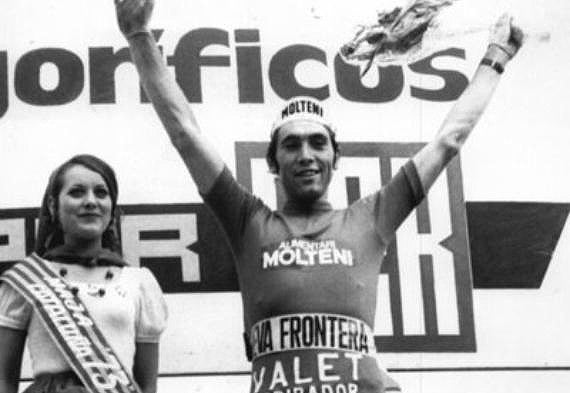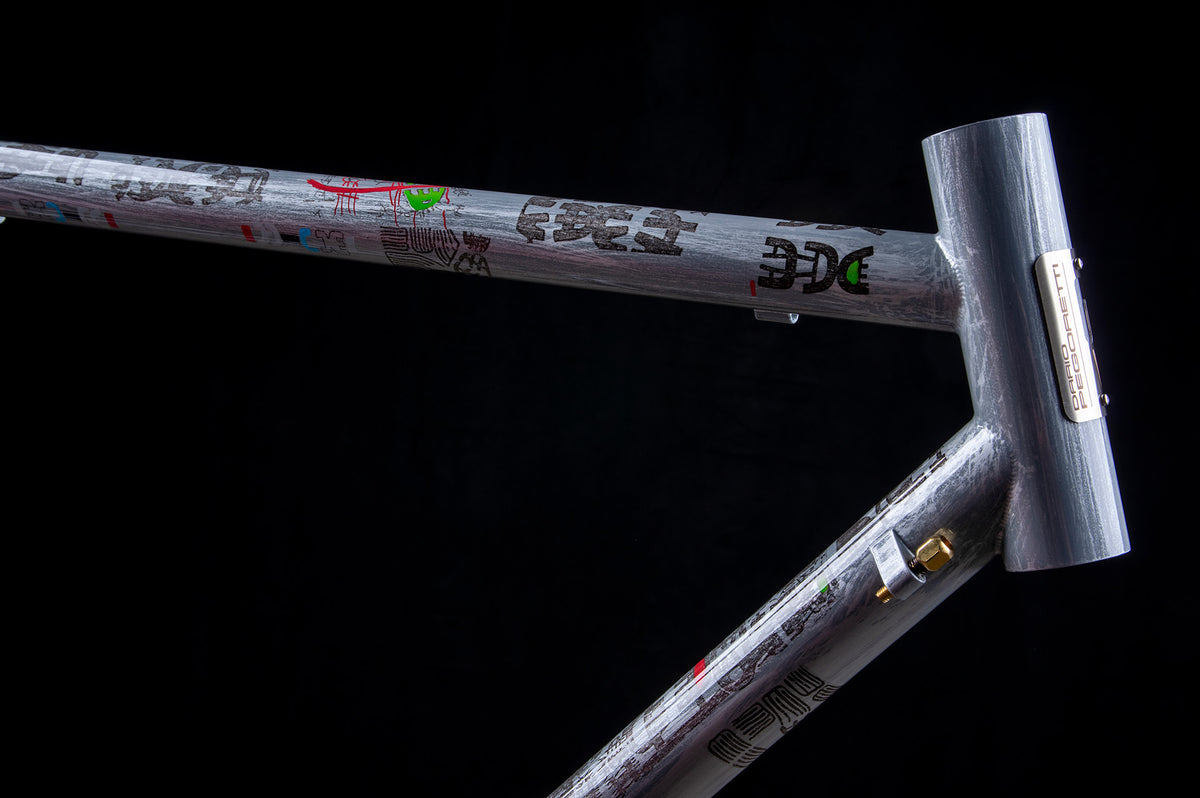
Vuelta a España - A Brief History
Grandioso
The Tour of Spain, or the Vuelta a España as known in the native tongue, is the 3rd of the Grand Tours. Less revered than the Tour de France or the Giro d'Italia, though the Vuelta has a rich history of its own. The first edition in 1935 saw the 50 competing riders average a gallant 240km per stage, with the 3411km course split over as little as 14 stages. After just two editions, the Vuelta was postponed until 1941 because of the Spanish civil war, and only saw the points classification introduced in 1945 following it's re-introduction after the 2nd World War. Initially held in the Spring, by 1995 the race had been moved to August/September to avoid direct competition with the Giro in May.

Anquetil in the 1963 Vuelta a España, recording the 1st ever Grand Tour Treble.
Jaques Anquetil was the first cyclist in history to win all three Grand tours, followed by Felice Gimondi in 1968, Eddy Merckx in 1973 & Bernard Hinault in 1978. Alberto Contador conquered the Vuelta thirty years later to add to his Tour and Giro victories & Vincenzo Nibali added his name to this elite few following his win in 2010. The Cannibal's triumph at the 1973 Vuelta with Molteni however has never been matched, Merckx winning six stages overall and all individual classifications except that of the mountains class, where he came second. Here's the great man celebrating Vuelta victory in 1973...

'The Cannibal', Eddy Merckx celebrating his unparalleled victory at the 1973 Vuelta.
Interesting Facts
- Now red, the overall leader would once sport a "golden jersey" or the "maillot amarillo" - a yellow jersey like that of the Tour De France, with the King of the Mountains wearing a blue polka dot jersey as apposed to the famous red polka dot of Le Tour.
- The leader of the points classification for many years was awarded a blue and yellow "fish jersey" sponsored by, believe it or not... Spain's marine industry.
- In 1982, Angel Arroyo was famed as the first winner to be disqualified for doping.
- The 1999 edition of the Vuelta included an infamous 12.9km climb with gradients as steep as 24%, one of the fiercest ever recorded in Europe.
- In 2013, Chris Horner became the oldest rider in history to win a Grand tour at the Vuelta at the age of 41, defeating the likes of strong GC riders, Alejandro Valverde, Joaqium Rodriguez and previous Vuelta winner, Vincenzo Nibali.
- The most successful rider at the Vuelta is Spanish rider Roberto Heras (pictured below at the start of his career) who has four wins, with Spaniards accounting for almost half the victory's at the Vuelta (30 out of it's 66 editions).

A young Roberto Heras riding his Gios Torino for Kelme-Costa Blanca in the Tour of Spain.
Who to look out for in 2016
Tinkoff Saxo's Alberto Contador, who left this years Tour de France early after a nasty crash is looking for success at this year's Vuelta, with Chris Froome and his shadow merchant Nairo Quintano of Movistar, as well as the young Columbian Esteban Chaves who impressed last year, also keen for success.
Chris Froome is yet to go all the way at the Vuelta a España, and after a strong first couple of days he's certainly looking like he means business. Most likely carrying over mild disappointment from missing out on gold at the Rio Olympics, our money's certainly on Froome to win his 2nd Grand Tour in the same calendar year.
Nairo Quintana again failed to impress at this year's tour seemingly doomed to forever ride in the shadow of Chris Froome. He enters this years Vuelta seeking his first Grand Tour victory since the 2014 Giro, riding defensively to claim fourth place overall at last year’s Vuelta. The peloton should remain weary of attacks from the Colombian over the route’s mountain stages.

Alberto Contador has won each of the three Vueltas he's ever entered, making him this year's favourite before the race. Looking to leave Tinkoff happy as he moves to team Trek-Segafredo at the end of the season, he's certainly Froome's biggest threat for victory.

Esteban Chaves, who finished second behind Vincenzo Nibali at this year's Giro is another dangerous Colombian rider and keen contender for this year's Vuelta following last year's impressive ride. Adam Yate's twin brother Simon is riding the support role for Orica-Greenedge.

If you enjoyed this article please don't forget to share it around 😊
Leave a comment
Comments will be approved before showing up.
Also in The Journal

Eddy Merckx - The Cannibal

Art & Bicycles – Dario Pegoretti - An Italian Master


Joe Madden
Author